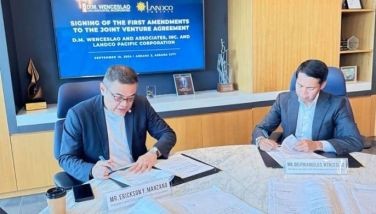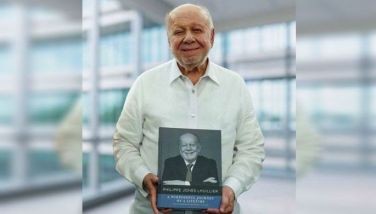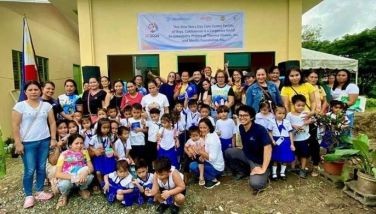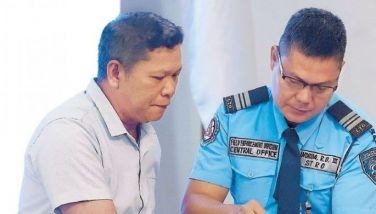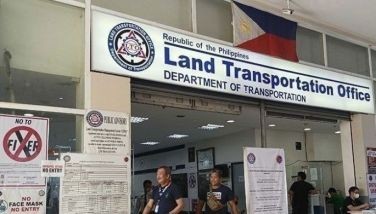How democracy works in preschool
To celebrate the 90th birthday anniversary of the late Senator Jose Diokno, well-known legislators and lawyers gathered together with UNDP Country Director, Renaud Meyer, to launch the book, “Chasing the Wind.” Discussions focused on the questions: “Is democracy working in the Philippines? Has the country truly evolved to become independent and sovereign? Have the Filipinos understood fully the concept of democracy such as that everyone has equal say in the political process? Can they have the same claim to liberty, equality and brotherhood? Have these attributes been nurtured at home and in school?”
Dr. Montessori inspired the British system of education
“What the child needs is not a broken will, but a strengthened will” - Maria Montessori
How does the will develop? By conditioning it to do what is right and proper. As the German philosopher Goethe in his Wilhelm Meister said, “I saw that the invaluable happiness of liberty consisted, not in doing what one pleases and what circumstances invite to, but in being able, without hindrance or restraint, to do in the direct way what one regard as right and proper.”
In England, the task of redirecting the educational system to continue developing the will of the nation belongs to the Board of Education. It is aided by the Educational Committee of the different country districts, especially that of the London Country Council. In 1918, having heard of the Montessori movement witnessed by British observers in the first International Course given by Dotoressa Maria Montessori in 1913 at Rome, Italy, the Board sent a teacher to train there. Mrs. Hutchinson later reported to the London Education Committee “the miracle for private study to take place in an infant school (preschool), of making it possible for a number of little children to work in the same room at the same time, and without any driving power beyond the impelling force that comes from the work itself.”
Mrs. Hutchinson, at her own expense, set up a Montessori school. In due course, the same “miracles” appeared in London. In time, the Education Committee members were convinced and converted. Sir John Gilbert, its chairman, said publicly to Montessori herself, who came to London (1919, 1921, 1923), “I desire to tender the thanks of London for the far reaching influence Dr. Montessori has exercised through the infant department on the whole educational system of London.” Part of this influence became popularized as the Individual Instruction technique. Unfortunately, it did not work fully since two major items of the formula were missing: the trained teacher and the “prepared environment.” Leaving on one side all technical definitions and theories, let us observe how “liberty” in the “prepared environment” works.
JASMS directress Doreen Gamboa compares play and work curriculum
Forty-five years ago, in the first O.B. Montessori school I organized at the old CuUnjieng mansion in Escoda, Paco, a well-known educator, who founded JASMS kindergarten paid me a visit. Mrs. Doreen Gamboa, an American married to a Filipino and mother of Joy Virata, courageously broke traditional teaching of imposing silence and immobility among school children by letting them play and make-believe life in the preschool class. I actually used her method at Telly Albert Zulueta’s preschool in San Lorenzo Village, Makati for four years, right after Max and I returned from our work in Saigon, Vietnam.
As a child expert, she readily observed that Montessori children get many things done in a “structured” way; whereas, her system allows more free-wheeling activities. Instead of the precision apparata of the Montessori “prepared environment,” JASMS teachers may use any material in the surroundings like colored paper, leaves, clay, water, etc. in various art crafts to express their lessons. She was fascinated by the methodical way the children learned Practical Living exercises in the care of one’s person and the environment in addition to academic exercises using work materials, not toys. Most impressive was the full concentration of each child on individually chosen apparatus without prodding by the teacher. She was indeed, a comrade in the mission to help the child develop to his/her full potential.
The “prepared environment” - calls the child to independence
Within the first month of the school year, the three- to five-year-old preschoolers are exposed to a “smorgasbord” of 300 exercises, using self-teaching devices. These have been universally tested to help preschool children, regardless of race or social class, to develop independence. All the materials are placed in the boxes and trays. It is amazing how only one but trained teacher can show each child how to use the different materials for work and order by returning it to its place, completing “the cycle of work.”
Organized in five open low shelves are Practical Life for Grooming and Housekeeping; Sensorial Apparata (to sharpen the visual sense, tactile, auditory, and olfactory sense); Language, Math Arts and Cultural Arts.
For 30 to 40 preschoolers, 3 to 5 years old sit themselves in square tables for group lessons, or tables for 2 or 1 for the timid new comer. This arrangement allows the trained teacher to condition each child to work well.
The teacher has to be especially alert during school opening in June. Two thirds of the class are newcomers, several of whom are usually in tears. She leads the latter to the laundry and easel painting area, where she clearly demonstrates the 13 steps in washing. While doing this, she keeps an eye on the other children, who may still wander about. To the fives, she offers the advanced Math or Geography apparata, while the fours are kept busy with Sensorial materials. Built in with a “control of error”, each child eventually manages to work independently on a material.
One day in the OBMC preschool
Early in the morning, a mixed age group of fours and fives are trickling into the Montessori classroom. Here comes Albert, all smiles (quite different from the tear-stained 3 1/2 year old boy of last June), greeting teacher with a handshake. Having deposited his snack bag in the usual shelf, he spreads a plastic mat on the table, where he organizes the shoe-shining tray. Four-year-old Jenny takes out again the number counters, which teacher just taught the day before. It is the third and most difficult of the three materials for counting 1 to 10. These bingo chips will teach her the “even and odd numbers” within 10. Joseph, 4 1/2 years, prefers to concentrate on reading. He takes out the “reading baskets” with the names of their classmates. Inviting two others, they read each card and distribute them to each child in the classroom.
A universal appeal that embodies mankind’s ideals
Senator Diokno’s book, “Chasing the Wind,” quoted Ecclesiastes I:14, symbolizing people’s exasperation in chasing democracy; but Dr. Montessori related that observers of these young children in the “prepared environment” find there the embodiment of their ideals. A well-known politician remarked, “Here we see discipline through liberty.” A Socialist said, “Here we see on a small scale the triumph of individual liberty with perfect organization.” At a Socialist congress in Berne, Germany, it was proclaimed that, “to be educated according to Dr. Montessori’s method is one of the social rights of man.” A priest wrote, “The humility and patience of the teacher in the Children’s House (early identification of the Montessori preschool), the superior value of deeds over words, the minute care in preventing and correcting errors, etc. are on a high spiritual plane of respect for the interior life of the child.”
In “chasing democracy” in the Philippines, Human Rights Chairperson Loretta Ann P. Rosales, UP Professor Emeritus Felipe Miranda, and UNDP Country Director Renaud Meyer laud Senator Diokno’s book for renewing a vital review of the current awareness of democracy in the Philippines, which can help revolutionize the traditional system of education to activate the full potential of the Filipino child from infancy to adolescence.
- Latest










